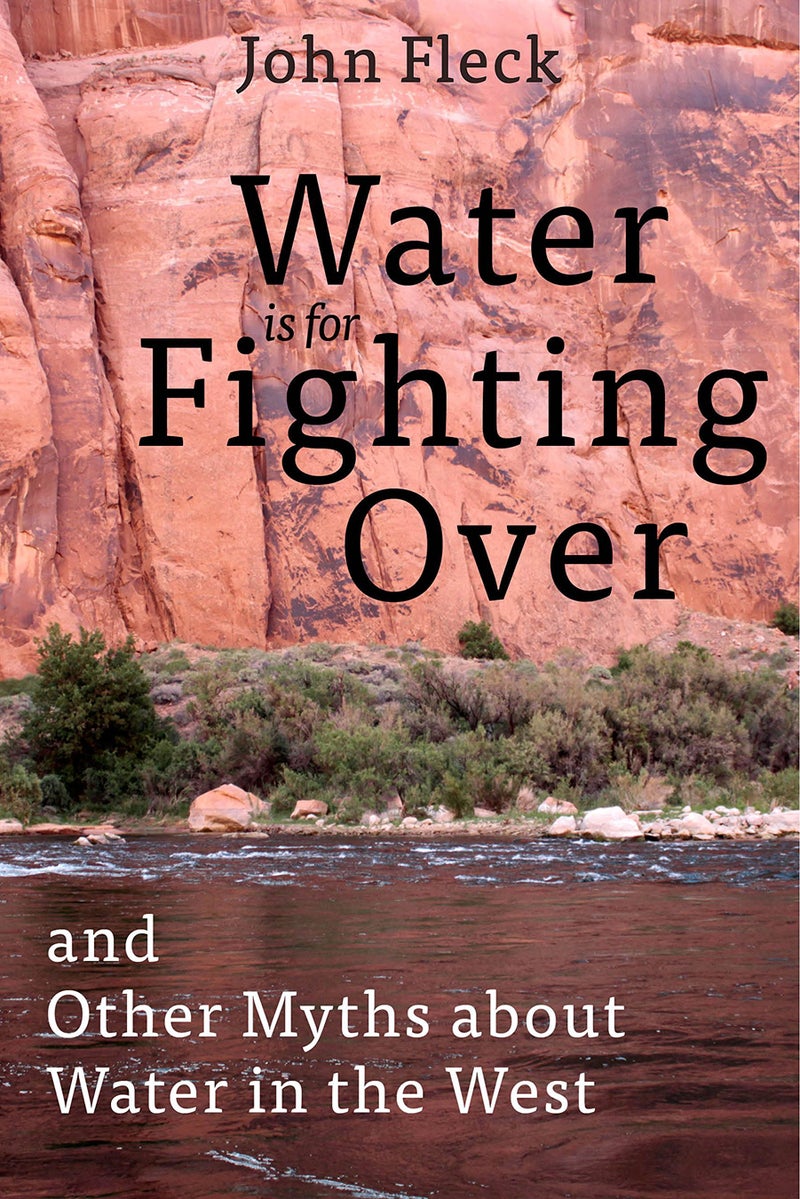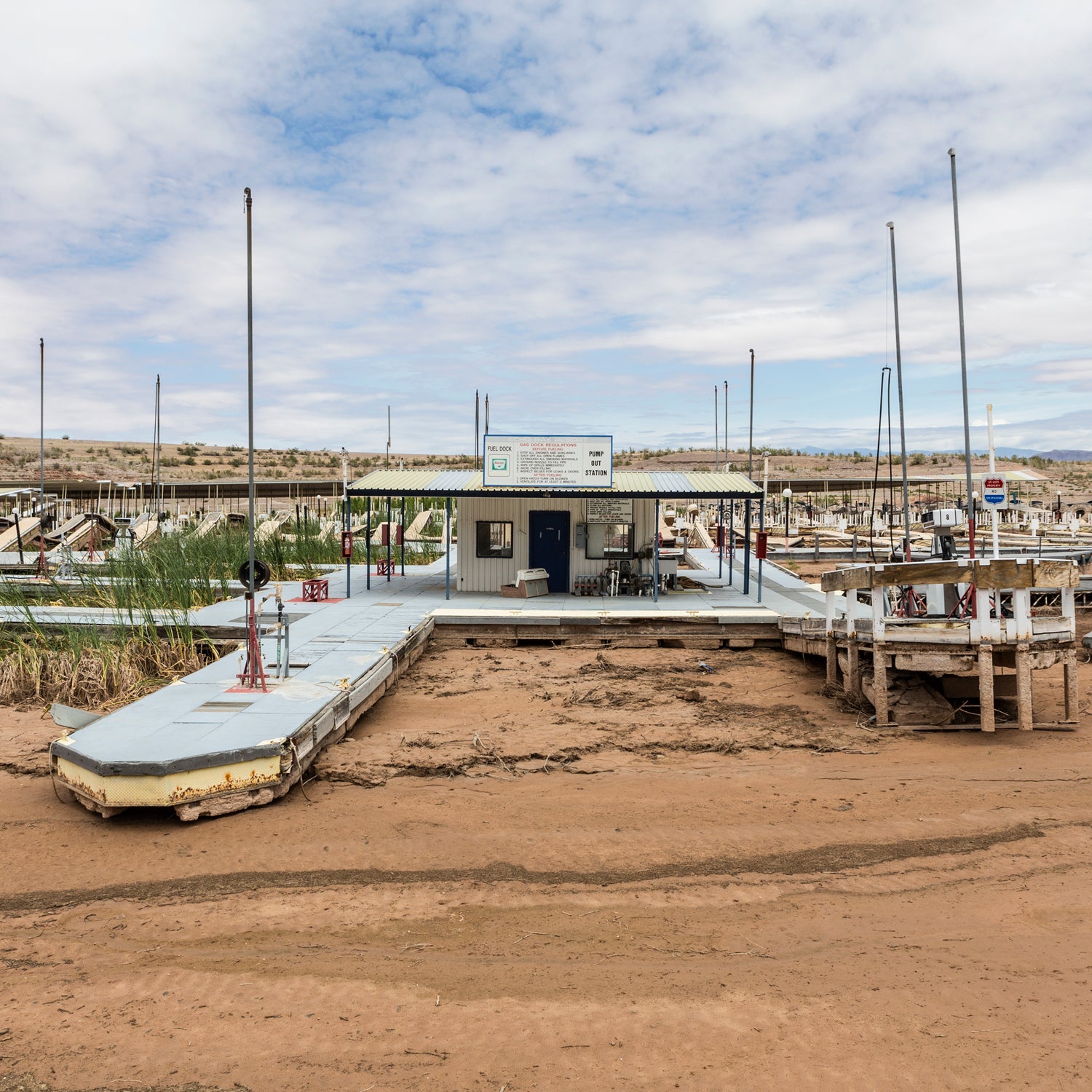If you live in the southwestern corner of the United States, youÔÇÖve probably been seeing drought in the news for the past decade. The idea of impending doom via desiccation grabs headlines. ItÔÇÖs less sexy to talk about the day-to-day ways cities, farmers, and advocacy groups are conserving water, but itÔÇÖs arguably more important.┬á
The drought catastrophe narrative gets in the way of meaningful water conservation, says┬áJohn Fleck in his new book,┬á ($30,┬áIsland Press), and itÔÇÖs not actually true to whatÔÇÖs happening on the ground.

Fleck, a longtime water reporter┬áwho is now director of the University of New MexicoÔÇÖs ,┬ácovered┬áwater and the environment ┬áfrom the 1980s through 2015. ÔÇťLike many who manage, engineer, utilize, plan for, and write about western water today, I grew up with the expectation of catastrophe,ÔÇŁ he writes. ÔÇťBut as drought set in again across the Colorado River Basin in the first decade of the twenty-first century, I was forced to grapple with a contradictionÔÇŽpeopleÔÇÖs faucets were still running. Their farms were not drying up. No city was left abandoned.ÔÇŁ
FleckÔÇÖs book, like a lot of current water reporting, deals mainly with the Colorado River and its tributaries, which provide┬áthe majority of water to seven western states. The Colorado River supports 10┬ápercent of AmericaÔÇÖs GDPÔÇöabout $1.4 trillionÔÇöand it brings water to 40 million people. ItÔÇÖs governed by a series of compacts, codified in 1922, that allocate how much water each state gets. But these compacts are problematic. They donÔÇÖt incentivize conservation, and┬ábecause conditions were much wetter leading up to the 1920s, when the compacts were written, more water is allocated than actually exists in the river. Now┬áweÔÇÖre faced with what water managers call a structural deficit: demand outweighs supply, and climate change is shrinking that supply further.
Fleck digs into the ways weÔÇÖre dealing with that deficit, from sprinkler systems to interstate compacts that outline how states share water. Water law can be arcane┬áand, for lack of a better word, dry. But Fleck works through the wonkiness with concrete examples that show the social side of conservation and community politics. He writes like a newspaper reporter, clear and spare, and he does a good job of outlining the policy and history that set up the ways we use water today. He explains how the Homestead Act, which motivated western migration by promising settlers 160-acre tracts of land, led to vast dam projects, and why itÔÇÖs so complicated to set up a water market that works. HeÔÇÖs also empathetic to the traditional water uses that got us where we are today. He gives a measured defense of alfalfa farmingÔÇöoften cited as one of the biggest wastes of waterÔÇöbecause of the economic stability it brings to rural areas.┬á
ThatÔÇÖs not to say the structural deficit isnÔÇÖt serious┬áor that major change isnÔÇÖt necessary. Water management is rife with sketchy political deals, Lake Mead is still dropping, and the delta is dry more often than not.┬áBut FleckÔÇÖs main argument is that when faced with scarcity, cities, communities, and individual water users donÔÇÖt just freak out and hoard waterÔÇöthey come up with smart, collaborative ways to deal with it. ThatÔÇÖs why Vegas still exists┬áand why aquifers in FleckÔÇÖs hometown of Albuquerque are rebounding after years of drawing down groundwater.┬á
Fleck says he wanted the book to bridge the gap between farmers, environmentalists, and city dwellers who care about conservationÔÇöto get them all on the same page. The book is wide┬áranging in that way, but it behooves the reader to come in with a little bit of a water background, or at least a working knowledge of the Colorado River system. He does a good job of describing the specific issuesÔÇöhow saline ocean water seeped into the groundwater of Redondo Beach, for instanceÔÇöbut sometimes the connective tissue, the river itself, is missing. It can be hard to draw the connection between cotton farming in Arizona and municipal water use in Los Angeles and how they bear on each other┬áwithout a mental map of the waterways. ItÔÇÖs clear that Fleck has this map in his own mindÔÇöand it just goes to show that even his valiant efforts to clarify water issues arenÔÇÖt always a match for the monstrous nature of the issue.
But this is not just a book for water wonks. Even if you care only enough to skim the headlines about the shrinking Salton Sea┬áor Lake MeadÔÇÖs burgeoning bathtub ring, FleckÔÇÖs book overall is a clear-eyed look at both the systemic inefficiencies in how water is used in the West┬áand the smart ways they can be addressed.
And there has┬ábeen a gap in that coverage. For decades, the go-to book about water in the West has been Mark ReisnerÔÇÖs , a 600-page opus on the corruption and complication of the water system. ItÔÇÖs a great, detailed, intricately reported book, but itÔÇÖs 30 years old. We needed something new. FleckÔÇÖs book addresses current events and coming struggles as much as it does history, and thatÔÇÖs important going into a future that will be defined by the way we use water.


